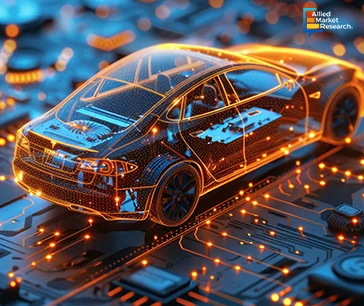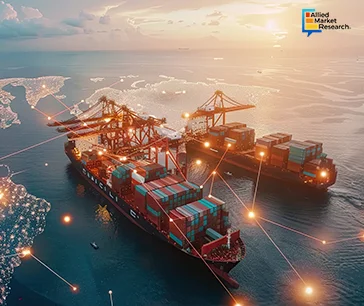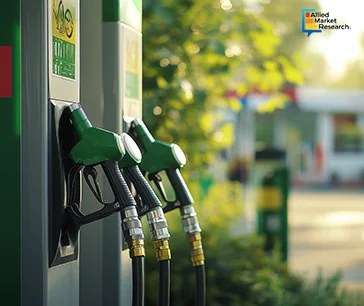Table Of Contents
- The transforming role of artificial intelligence and machine learning in modern automobiles
- The integration of IoT and connected vehicle data in automobiles accelerating the sector’s growth
- The role of AR and VR technology in opening new avenues in the domain
- Advancements in logistics and supply chain management boosting the success rate of the sector
- Logistics and supply chain management are important aspects in the domain, ensuring the efficient flow of materials, components, and finished vehicles across global markets. This intricate network involves sourcing raw materials, coordinating with suppliers, managing production timelines, and delivering products to dealers or customers. On the other hand, just-in-time (JIT) manufacturing has made supply chains more vulnerable to disruptions. It is an inventory management system that aligns raw-materials orders from suppliers directly with production schedules. With advances in digitalization, technologies like AI, IoT, and blockchain enhance visibility, tracking, and efficiency. To overcome challenges such as chip shortages and shifting demand, the logistics and supply chain industry is increasingly focused on building resilient, sustainable, and adaptable supply chain strategies.
- The adoption of alternative fuels in bringing sustainability in automotive and transportation
- Final words

Lalit Janardhan Katare

Koyel Ghosh
Automation & Transportation: A Look into the Top 5 Trends Transforming the Domain in Q4 2024

Automotive and transportation is one of the largest sectors that have undergone significant advancements in the last few years. This is mainly because of extensive technological advancements and the growing demand for more flexible, personalized, and compatible mobility among individuals worldwide. Moreover, the rising environmental concerns and government regulations promoting zero-emission technologies have increased the development of electric vehicles. In addition, many EV manufacturers have started incorporating solid batteries with rapid advancements in battery technology to improve performance and safety of these vehicles.
On the other hand, the rise of self-driving technology has notably transformed transportation. Many leading players in this domain are increasingly testing and deploying autonomous systems for improved efficiency and safety. The integration of advanced driver assistance systems (ADAS) is becoming a new standard in modern vehicles, enhancing enhanced features like lane departure warnings and emergency braking. Furthermore, the domain is increasingly focusing on sustainable practices, including the development of alternative fuels and eco-friendly manufacturing processes. This commitment toward sustainability has reshaped product offerings and helped make profitable strategies across the sector. Allied Market Research has recently published a study on the latest developments and futuristic trends in the automotive and transformative sector that have transformed the landscape in Q4 2024.
The transforming role of artificial intelligence and machine learning in modern automobiles
Artificial intelligence and machine learning are the modern technologies that have transformed modern automobile systems significantly, enhancing vehicle performance, safety, and user experience. AI powers ADAS, allowing features like autonomous driving, adaptive cruise control, and emergency braking. ML algorithms analyze vast data from sensors, improving real-time decision-making and enabling predictive maintenance, which reduces downtime and repair costs. In addition, AI algorithms also optimize production lines in the automotive industry by integrating robotics, boosting efficiency, and minimizing waste. Simultaneously, ML personalizes in-car experiences, adapting navigation, music, and climate control to driver preferences. These technologies are shaping the future of connected, automated, and smart mobility solutions across the industry.
According to AMR’s report, the automotive artificial intelligence and machine learning industry is predicted to garner a revenue of $405.3 billion by 2032. The market accounted for $13.8 billion in 2022 and is expected to rise at a CAGR of 40.7% from 2023 to 2032. The increase in demand for autonomous vehicles and the rise in high-speed internet and 5G technology are the major factors that have played a major role in the expansion of the domain in Q4 2024. Also, the growing demand for premium vehicles with enhanced features and the rise in connected vehicle technology are expected to increase the use of AI and ML technologies across the sector in the coming period.
The integration of IoT and connected vehicle data in automobiles accelerating the sector’s growth
The Internet of Things and connected vehicle data has revolutionized the automotive industry by enabling real-time data exchange between vehicles, infrastructure, and external devices. IoT technologies in vehicles allow for continuous monitoring of performance metrics, predictive maintenance, and enhanced safety features. Similarly, connected vehicle data improves traffic management, enabling vehicles to share location, speed, and environmental data to optimize routes and reduce congestion. Moreover, this data aids in creating personalized in-car experiences, from infotainment systems to climate control. IoT-driven insights also enable automakers to develop new services, enhancing vehicle efficiency, driver satisfaction, and overall operational effectiveness across the industry.

As per a recent report published by Allied Market Research, the IoT in automotive industry is projected to reach $760.3 billion by 2032, growing at a CAGR of $760.3 billion by 2032. The landscape was valued at $63.03 billion in 2019. The surge in the need for constant connectivity, growing consumer demand for connectivity solutions, and rise in the tech-savvy population are the key determinants that have increased the implementation of IoT and connected car technology in modern vehicles. Moreover, continuous technological advancements in IoT such as edge computing and 5G connectivity are expected to support the development of advanced IoT applications in vehicles.
The role of AR and VR technology in opening new avenues in the domain
Augmented Reality and virtual Reality have emerged as promising technologies that have redefined the automotive and transportation domain by enhancing design, manufacturing, and customer experience. AR provides real-time data on vehicle components during assembly or maintenance, improving efficiency and accuracy while manufacturing cutting-edge vehicles. In design, VR enables immersive 3D prototyping, reducing the time and cost of physical models. Nowadays, many leading showrooms have started using VR to offer virtual test drives and customized car viewing experiences, enabling customers to explore vehicles in a realistic, interactive way. Additionally, AR navigation systems in cars enhance driving safety by projecting directions directly onto the windshield, providing a seamless, hands-free experience for drivers. Recently, AMR published a report on the automotive AR and VR market, projecting the industry to generate a revenue of $673,602.2 million by 2025 and register a CAGR of 175.7% from 2018 to 2025.
Moreover, the formation of mixed reality (MR) with the amalgamation of AR and VR has opened new opportunities in the domain. MR helps manufacturers visualize how a vehicle looks and performs on the road. Also, it enables line assemblers and craftsmen to understand how accurately they have installed spare parts. On the other hand, the rapid development of HUDs has enhanced safety features, providing drivers with essential information like speed, fuel levels, and navigation directly at eye level for a smoother driving experience. This driving assistance system helps reduce distracted driving and plays an important role in minimizing road accidents.
Advancements in logistics and supply chain management boosting the success rate of the sector
Logistics and supply chain management are important aspects in the domain, ensuring the efficient flow of materials, components, and finished vehicles across global markets. This intricate network involves sourcing raw materials, coordinating with suppliers, managing production timelines, and delivering products to dealers or customers. On the other hand, just-in-time (JIT) manufacturing has made supply chains more vulnerable to disruptions. It is an inventory management system that aligns raw-materials orders from suppliers directly with production schedules. With advances in digitalization, technologies like AI, IoT, and blockchain enhance visibility, tracking, and efficiency. To overcome challenges such as chip shortages and shifting demand, the logistics and supply chain industry is increasingly focused on building resilient, sustainable, and adaptable supply chain strategies.
A recent report published by Allied Market Research has presented future projections of the warehousing and distribution and logistics market. According to the company’s study, the industry is projected to rise at a CAGR of 15.3% from 2022 to 2031, generating a revenue of $57.6 billion by 2031. The surge in demand for refrigerated warehouses, and the rise in last mile deliveries along with logistics automation are expected to create immense opportunities in the sector. Furthermore, the growing demand for tech-driven warehousing & logistics services and cost-effective solutions is predicted to boost the growth of the industry in the coming period.
The adoption of alternative fuels in bringing sustainability in automotive and transportation
Alternative fuels such as electricity, hydrogen, biofuels, and natural gas, offer promising options to reduce dependency on traditional fossil fuels and minimize greenhouse gas emissions. These fuels include hydrogen, biofuels, natural gas, and electricity. Electric vehicles are leading this transition, driven by advancements in battery technology and renewable energy integration. The increase in demand for fuel-efficient, high-performance, and low-emission vehicles are the prime reasons which have increased the production of electric vehicles in the last few years.

On the other hand, hydrogen fuel cells have become an ideal alternative for heavy-duty vehicles. This is mainly due to its quick refueling times and long ranges, making it suitable for commercial transportation. According to a report published by AMR, the hydrogen fuel cell vehicle market is anticipated to garner a revenue of $57.9 billion by 2032, rising at a CAGR of 43% from 2023 to 2032. Besides, biofuels derived from organic materials present sustainable options for internal combustion engines, while compressed natural gas CNG offers a cleaner alternative. Together, these fuels are helping to pave the way for a more sustainable automotive future.
Final words
The automotive and transportation industry has witnessed significant growth in the fourth quarter of 2024 owing to increasing demand for emission-free mobility solutions among developing and developed economies. Moreover, the growing trend toward integrated transportation solutions that combine various modes of transport into a single accessible service has gained huge popularity these days. This transition is expected to encourage the next generation population to use public transport and shared mobility options to reduce congestion and environmental impact in the future.

To gain more insights into the emerging growth opportunities in the automotive and transportation sector, contact our industry specialists today!

